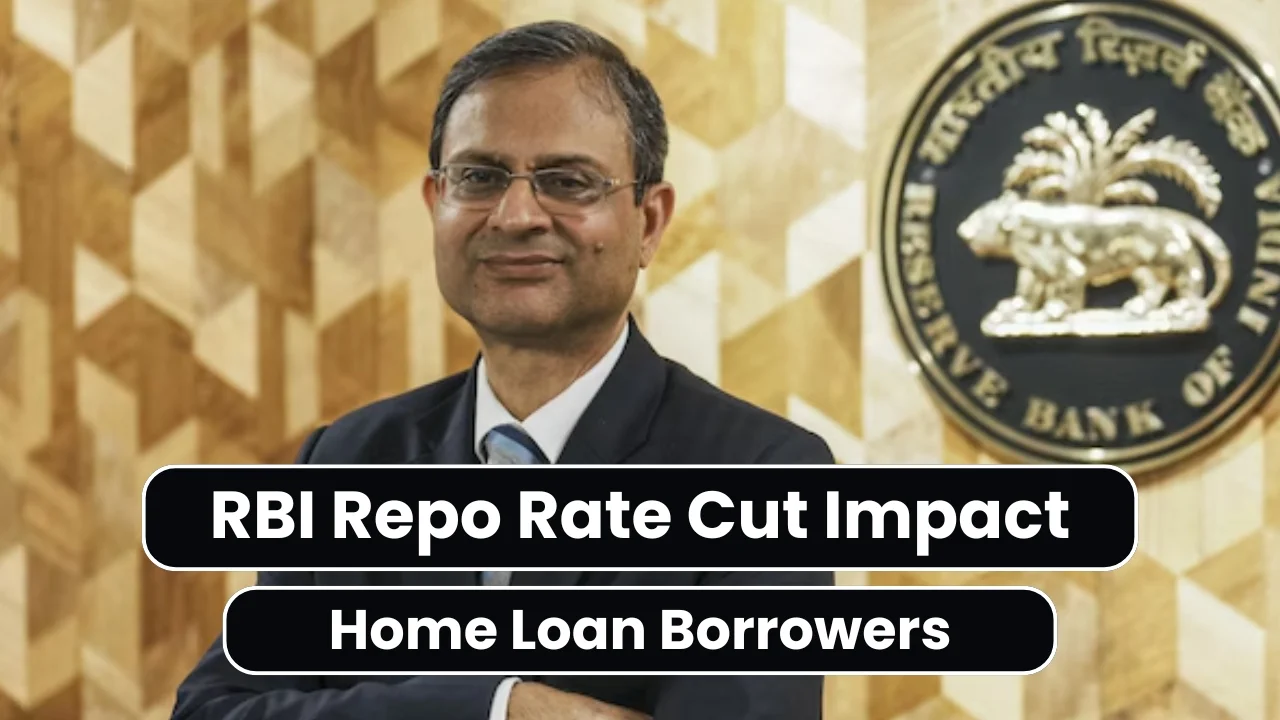The RBI Governor repo rate cut on February 7, 2025, marks the first reduction in nearly five years. The Monetary Policy Committee (MPC) decided to lower the repo rate by 25 basis points (bps), bringing it down from 6.50% to 6.25%. This decision was made under the leadership of new RBI Governor Sanjay Malhotra in his first key address after taking office.
This rate cut aims to stimulate economic growth by making borrowing more affordable for individuals and businesses. One of the biggest beneficiaries of this decision will be home loan borrowers, as lower interest rates translate into reduced EMIs and improved affordability.
How the RBI Governor Repo Rate Cut Affects Home Loans
The repo rate is the interest rate at which the Reserve Bank of India (RBI) lends money to commercial banks. When the repo rate is reduced, banks can borrow money at a lower cost and are expected to pass on the benefit to customers through lower loan interest rates.
Impact on Home Loan Borrowers
| Factor | Impact of 25 bps Rate Cut |
|---|---|
| EMI Reduction | Monthly EMIs will decrease, making home loans more affordable. |
| Total Interest Savings | Borrowers with long-term loans will save significantly over time. |
| Refinancing Opportunity | Those with existing loans at higher rates can refinance for lower EMIs. |
| New Homebuyers | Lower rates may encourage more people to buy homes. |
For example, on a ₹50 lakh home loan with a 20-year tenure, a 25 bps rate cut could lead to savings of approximately ₹4.20 lakh over the loan period.
Will Banks Pass on the Rate Cut?
While the RBI Governor repo rate cut is great news for borrowers, the actual impact depends on how quickly and fully banks reduce their lending rates. Some key factors to consider:
- Floating Rate Loans: Borrowers with floating-rate home loans will automatically benefit as banks adjust their rates.
- Fixed-Rate Loans: Those with fixed-rate home loans will not see any immediate change unless they choose to refinance.
- Bank Lending Policies: Some banks may delay or partially pass on the rate cut, depending on their financial position.
Historical Repo Rate Trends
Here’s a look at the historical repo rates over the years:
| Year | Repo Rate (%) |
|---|---|
| 2010 | 5.25 – 6.25 |
| 2015 | 6.75 |
| 2020 | 4.00 |
| 2023 | 6.25 |
| 2024 | 6.50 |
| Feb 2025 | 6.25 |
The repo rate had remained unchanged at 6.50% for 11 policy meetings before this recent cut.
Global Economic Concerns and Inflation Risks
While the RBI Governor repo rate cut aims to boost the economy, global risks could affect financial stability. The world economy is growing at a below-average rate, and India faces challenges such as:
- Trade protectionism and economic slowdowns in key markets.
- Geopolitical tensions affecting commodity prices.
- Financial market volatility that could impact bank lending.
Despite these risks, the Indian economy remains resilient, and the rate cut is expected to support domestic growth.
Reverse Repo Rate Remains Unchanged
The reverse repo rate, which determines how much interest the RBI pays banks for depositing excess funds, remains at 3.35%. Keeping this rate stable ensures that banks continue lending to businesses and individuals.
Conclusion
The RBI Governor repo rate cut to 6.25% brings relief to home loan borrowers by lowering EMIs and making loans more affordable. While the actual benefit depends on how quickly banks adjust their rates, this move is expected to encourage home buying and boost the real estate sector. Borrowers should keep track of their bank’s response and consider refinancing if they have older loans at higher interest rates.
